Explore web search results related to this domain and discover relevant information.
891 votes, 566 comments. Outside of entry level first jobs what kind of jobs do LGBTQ+ people work? I recently started in a blue collar field (wind…
Outside of entry level first jobs what kind of jobs do LGBTQ+ people work? I recently started in a blue collar field (wind turbine technician) and I haven’t work with a single openly queer person. I miss being among peers.So what do most of y’all do for work? Archived post. New comments cannot be posted and votes cannot be cast. Share ... Thank you for your post, if this is a question please check to see if any of the links below answer your question. If none of these links help answer your question and you are not within the LGBT+ community, questioning your identity in any way, or asking in support of either a relative or friend, please ask your question over in r/AskLGBT.Remember that this is a safe space for LGBT+ and questioning individuals, so we want to make sure that this place is dedicated to them. Thank you for understanding. This automod rule is currently a work in progress.If you want to help keep r/lgbt as a safe space for the LGBTQ+ community on reddit please see here for more info: https://www.reddit.com/r/lgbt/comments/swgthr/were_looking_for_more_moderators_to_help_keep/ I am a bot, and this action was performed automatically. Please contact the moderators of this subreddit if you have any questions or concerns. ... veterinary technician here! i’m a bisexual trans man, and i work with SO MANY lgbtq+ people at my hospital, even a lot of the doctors are gay!

Here are some resources for LGBTQ+ recruitment. A new generation is entering into the work force with more expectations of fairness than previous cohorts.
With a new generation of progressive minds entering the workforce, many employers are actively recruiting LGBTQ+ employees. Here are some resources for…Beyond touting employment non-discrimination policies and inclusive benefits, employers are actively recruiting LGBTQ+ workers.The Human Rights Campaign reports on news, events and resources of the Human Rights Campaign Foundation that are of interest to the general public and further our common mission to support the LGBTQ+ community.Increasingly, businesses are engaged with professional recruiting event for LGBTQ+ students and professionals such as the annual Lavender Law conference and Reaching Out MBA career expo, which each draw hundreds of graduate student attendees, corporate sponsors and recruiters. Professional job fairs such as these provide attendees the opportunity to interact with employers that are very clearly interested in hiring LGBTQ+ professionals.
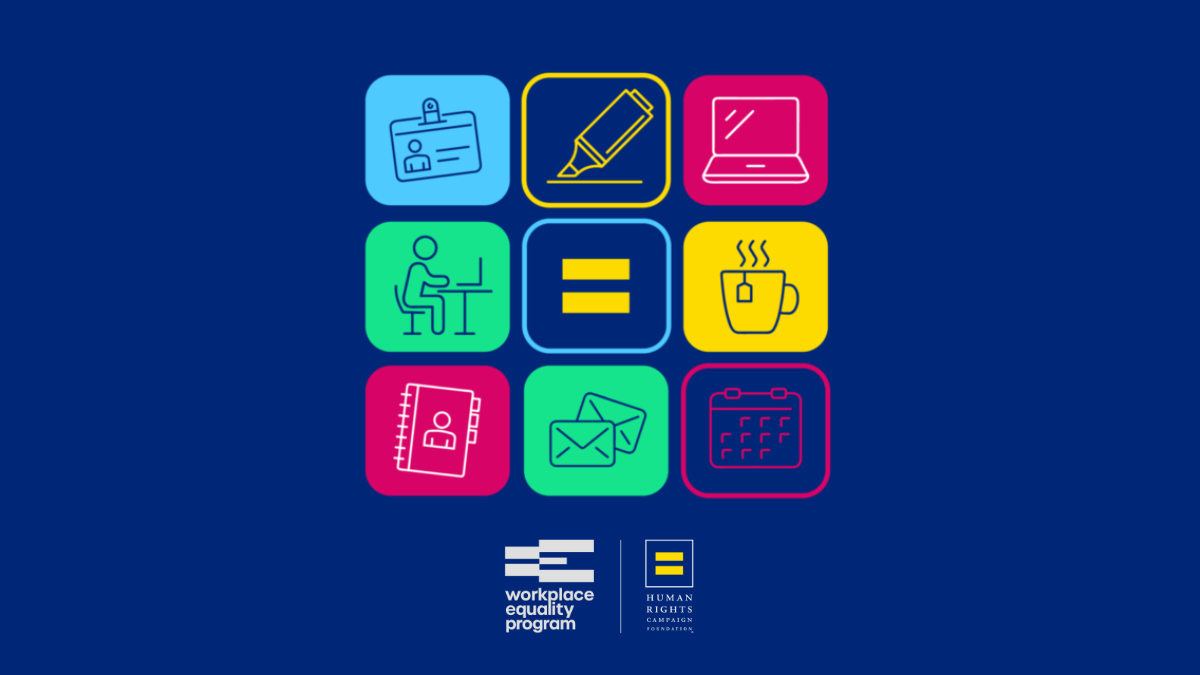
Connect globally with LGBTQ+ professionals and graduates through our innovative job board, also offering networking, mentoring, events, and resources to foster allyship and inclusive communities. Join us to accelerate workplace inclusion.
The global recruitment & networking hub for LGBTQ+ professionals. Find jobs in lesbian, gay, bisexual, queer and trans friendly organisations. Grow your LGBTQ+ professional network. Read the latest LGBTQ+ professional news.Search jobs in LGBTQ+-inclusive organizations and start your new professional challenge.Look for hundreds of global events and stay up to date with news affecting the LGBTQ+ community.Browse thousands of LGBTQ+ mentors and allies in your industry or give back to the community and let students and other professionals contact you for guidance and advice.
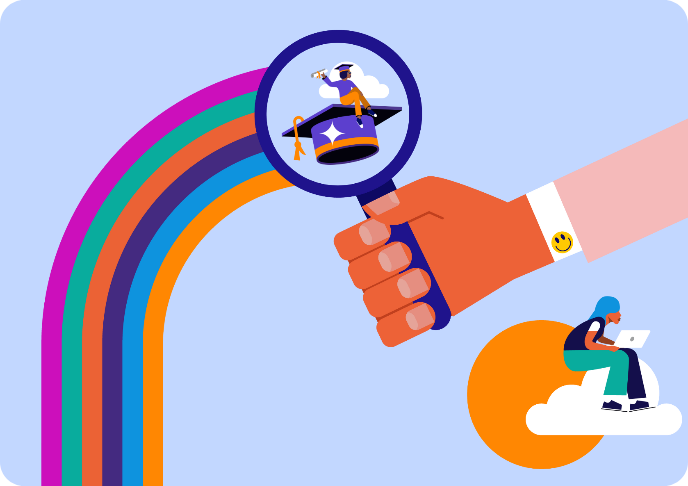

Many LGBTQ+ employees – more than eight million in the US workforce alone, according to some estimates – have had similar experiences of discomfort and conflict, whether through explicit workplace discrimination, or microaggressions – subtler, indirect actions that intentionally or ...
Many LGBTQ+ employees – more than eight million in the US workforce alone, according to some estimates – have had similar experiences of discomfort and conflict, whether through explicit workplace discrimination, or microaggressions – subtler, indirect actions that intentionally or unintentionally make marginalised groups feel hurt or even attacked.Half of LGBTQ+ and “sexual and gender diverse” people surveyed by the Center for American Progress (Cap) in 2022 reported experiencing some form of workplace discrimination or harassment in the past year because of their sexual orientation or gender identity.And, often, these workers quit as a result: a 2021 study by the Williams Institute on Sexual Orientation and Gender Identity Law and Public Policy, a US-based public-policy think tank, showed that more than one-third of LGBTQ+ employees said they have left a job during their lifetime because of how they were treated by their employer based on their sexual orientation or gender identity.This kind of discrimination can take a toll on LGBTQ+ workers, and even have knock-on effects for employers. But although these issues proliferate, some data shows workers are changing the way they’re searching for jobs.
Since 2008, the Human Rights Campaign Foundation, through its Workplace Equality Program, has conducted four major national studies of the workplace environment for lesbian, gay, bisexual, transgender and queer (LGBTQ+) workers: “Degrees of Equality,” “The Cost of the Closet and The Rewards ...
Since 2008, the Human Rights Campaign Foundation, through its Workplace Equality Program, has conducted four major national studies of the workplace environment for lesbian, gay, bisexual, transgender and queer (LGBTQ+) workers: “Degrees of Equality,” “The Cost of the Closet and The Rewards of Inclusion,” “A Workplace Divided: Understanding the Climate for LGBTQ+ Workers Nationwide,” and now, “Equality Rising: LGBTQ+ Workers and the Road Ahead.”Over these decades of research, we have been able to better identify the key shapers of the workplace climate for LGBTQ+ inclusion, which includes everyday non-work-related conversations, daily interactions with one’simmediate supervisor and working group, and the comfort with, and acceptance of, LGBTQ+ identities and communities by their colleagues.The national findings underscore the persistence of workplace double standards and social isolation faced by LGBTQ+ people.In "Equality Rising", HRC Foundation seeks to help contextualize the current workplace climate and experiences of LGBTQ+ workers.
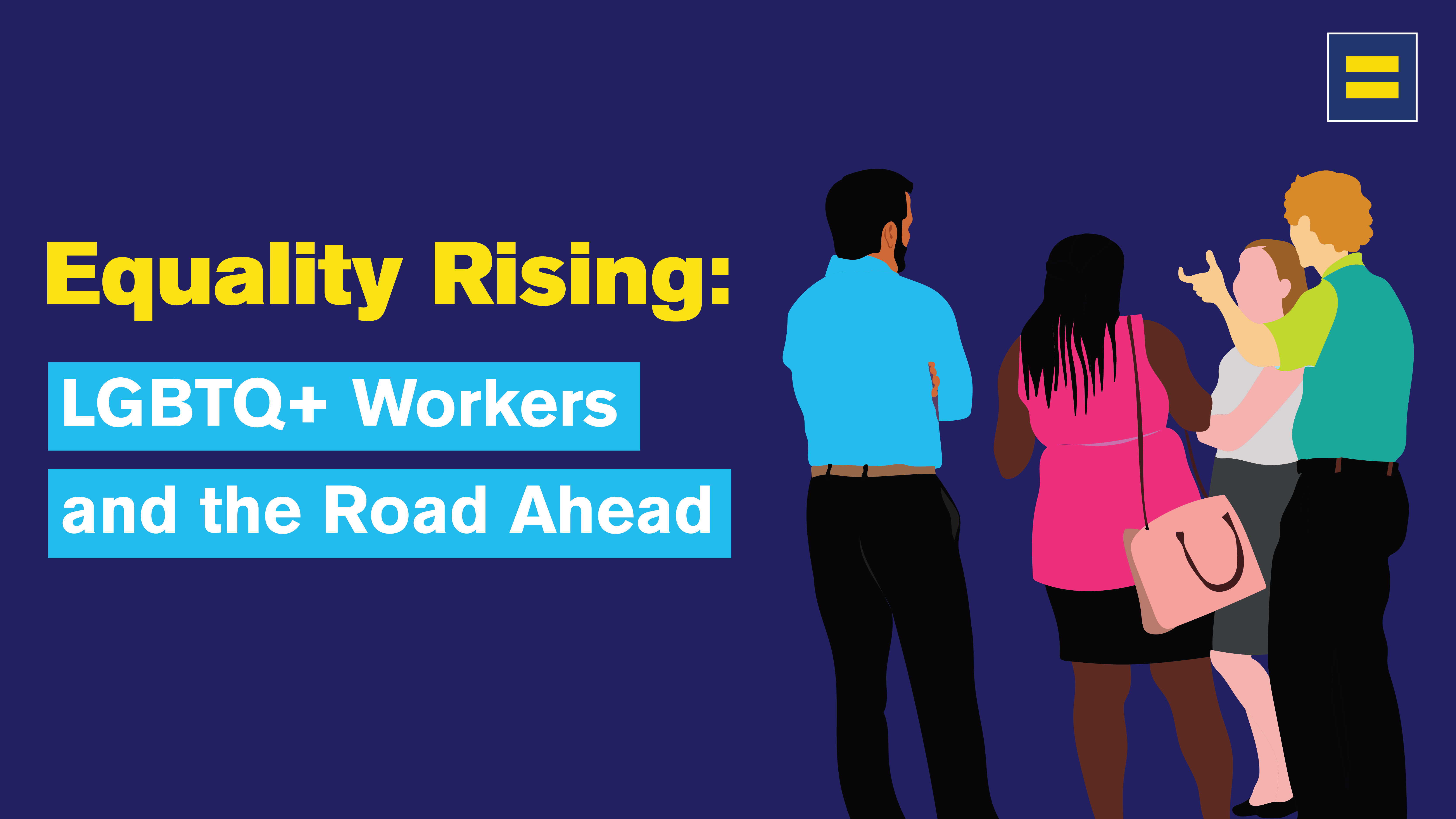
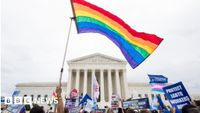
The top court in the US has ruled that employers who fire workers for being gay or transgender are breaking the country's civil rights laws. In a 6-3 decision, the Supreme Court said federal law, which prohibits discrimination based on sex, should be understood to include sexual orientation and gender identity. The ruling is a major win for LGBT ...
The top court in the US has ruled that employers who fire workers for being gay or transgender are breaking the country's civil rights laws. In a 6-3 decision, the Supreme Court said federal law, which prohibits discrimination based on sex, should be understood to include sexual orientation and gender identity. The ruling is a major win for LGBT workers and their allies.Members of the LGBT community across the US were celebrating on hearing the news. ... Today's Supreme Court ruling brought me to tears. As a gay man lucky enough to live in California and originally come from New York I've never had to personally worry about losing a job or not being hired simply because of my sexual orientation. But as a financial adviser working with clients all around the country for over 30 years, I've heard countless stories of people who have lost their jobs simply for being gay.While some states in the US had already explicitly extended such protections to LGBT workers, many have not.LGBT advocates hailed the decision as the end of people hiding their sexuality at work.
Despite visible corporate support, today’s workplace is falling short of full inclusion. Here’s what companies need to know. ... Corporate America has played an important role in the progress of LGBTQ+ rights over the past two decades, with many companies making public gestures of support.
Hundreds of major consumer brands have become regular sponsors of annual Pride events. A record 206 major corporations signed an amicus brief in the spring advocating for the Supreme Court’s June 2020 decision protecting LGBTQ+ individuals from workplace discrimination.1Bostock v.Despite these outwardly visible signs of progress, many challenges persist. Likewise, a growing business case for inclusion has not translated into solid gains for the LGBTQ+ community within the workplace itself. According to our ongoing Women in the Workplace research, LGBTQ+ women, for example, are more underrepresented than women generally in America’s largest corporations.Just four openly LGBTQ+ CEOs head these corporations, only one of whom is female and none of whom is trans.2“In New York, 2 of the 4 openly LGBT+ CEOs of Fortune 500 companies reflect on the importance of visibility,” Out Leadership 2019 US Summit, May 13, 2019, outleadership.com. It’s thus not surprising that LGBTQ+ women and trans employees often feel isolated from one another in the workplace, creating a more negative workplace experience and affecting their motivation to become a top executive.Our research also finds that LGBTQ+ women face increased rates of sexual harassment and discrimination based on gender and orientation. Moreover, trans employees face a distinct set of obstacles to performance and career progression. To engage a new generation of workers and consumers—many of whom choose careers and products based on diversity and inclusion—companies must move beyond public gestures of support for LGBTQ+ issues to create a more positive work experience.

For decades, compared with the ... disproportionately affected LGBTQ people, but the recovery has also likely perpetuated existing inequities, leaving many LGBTQ workers stranded in low-quality jobs that offer poverty wages, few benefits, and limited protections....
For decades, compared with the general population, LGBTQI+ people have faced increased risk of experiencing economic insecurities, such as higher rates of poverty, unemployment, and public benefits use. Not only has the pandemic disproportionately affected LGBTQ people, but the recovery has also likely perpetuated existing inequities, leaving many LGBTQ workers stranded in low-quality jobs that offer poverty wages, few benefits, and limited protections.While improving data collection on LGBTQI+ communities through labor-market-specific surveys more broadly is necessary to enhance the public’s and policymakers’ understanding of the proliferation of low-quality jobs among LGBTQI+ workers, the data demonstrate a clear need for the creation of good jobs that target LGBTQI+ people.Compared with the general population, LGBTQI+ people face significant challenges that obstruct pathways to achieving economic security, including discrimination in employment and housing, workforce exclusion, and lack of access to jobs that pay well and offer benefits that meet their needs and those of their families.Evidence from earlier on in the pandemic reveals that LGBTQ households, especially low-income LGBTQ people and LGBTQ people of color, were more likely than non-LGBTQ households to experience food insecurity, loss of employment, significant financial challenges, and barriers to accessing health care as a result of the pandemic. Losses in employment income come at a time when the unemployment rate is at historic lows and employers are claiming that they are struggling to find workers amid the ongoing good jobs shortage.
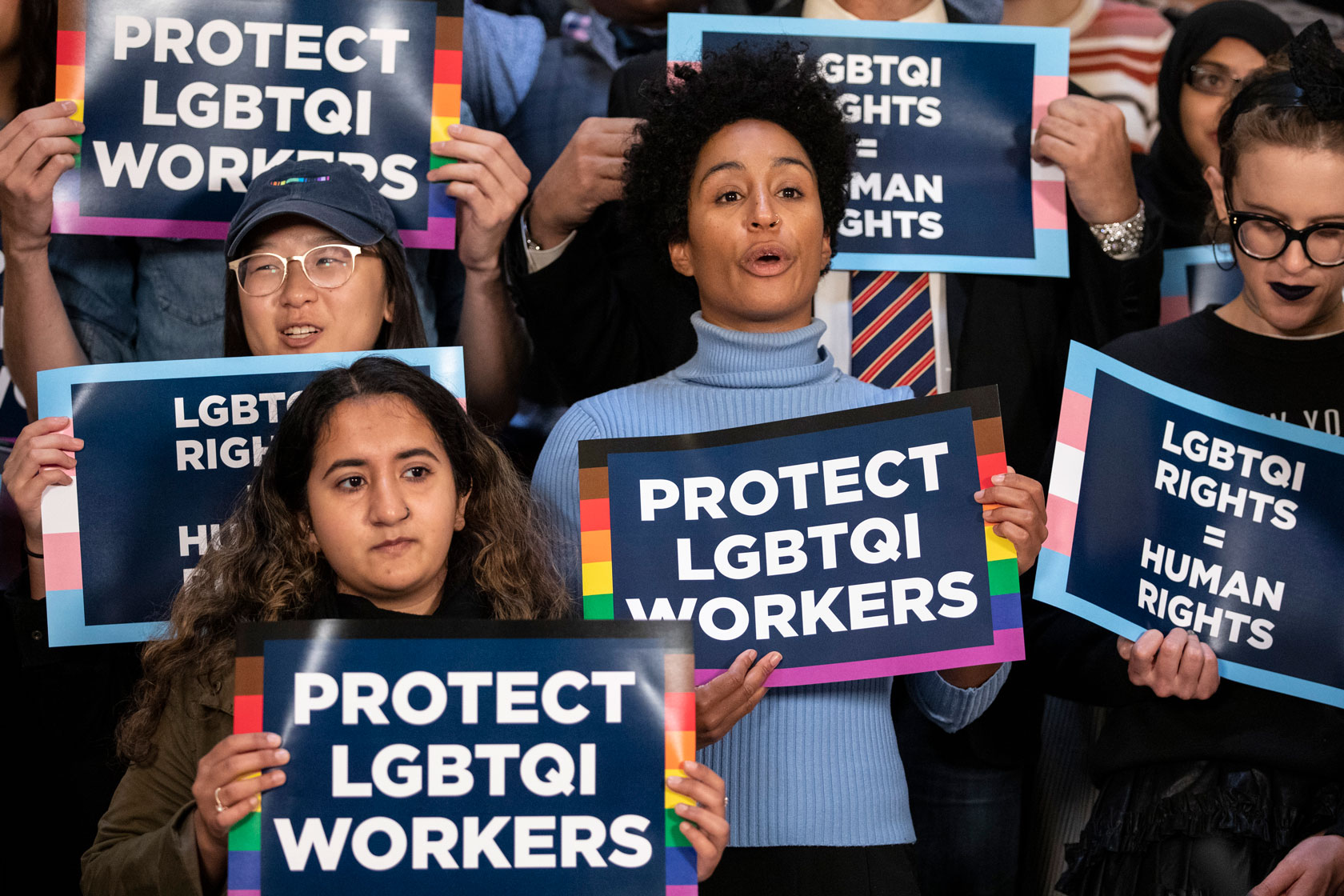

That reality has never been more ... purpose, working within, around, and outside of systems to change them for the better. ... Silicon Valley, one where my lived experience became my leadership compass. Over the years, I have been honored to serve at the forefront of LGBTQ+ advocacy ...
That reality has never been more urgent, and it is why I have built a career grounded in purpose, working within, around, and outside of systems to change them for the better. ... Silicon Valley, one where my lived experience became my leadership compass. Over the years, I have been honored to serve at the forefront of LGBTQ+ advocacy in multiple arenas, from nonprofit work atThe GenderCool Project to being an executive producer at Free Lion Productions, an LGBTQ+ owned studio led by Emmy-nominated filmmaker Fiona Dawson. These roles have been about more than representation. They have been about building platforms, cultural, corporate, and technological, where belonging is not an afterthought, but the foundation. That same ethos fuels my work in technology.Discover how one individual's journey from silence to advocacy is reshaping systems to protect the most vulnerable.In this personal essay, Vincent McNeely reflects on how a fearful childhood in Kansas and a career in Silicon Valley led to empowering others through inclusive systems.
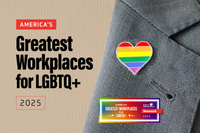
A 2024 report from the Williams Institute at the University of California, Los Angeles found that 47 percent of LGBTQ+ workers have experienced discrimination at work in their lives, and that 46 percent of LGBTQ+ employees have not disclosed their orientation to their employers.
To highlight the companies that are actively pursuing a more inclusive and accepting culture for employees of all sexual orientations and gender identities, Newsweek has partnered with data analytics firm Plant-A Insights Group for the third annual ranking of America’s Greatest Workplaces for LGBTQ+. The list recognizes the top 500 companies across 36 different industry categories.Whether you’re in search of a welcoming work environment for your own identity or to support your fellow co-workers, we hope this ranking illuminates which companies are putting their best foot forward when it comes to positive workplace culture and LGBTQ+ inclusivity.A great workplace is one that strives to make all its employees feel respected and appreciated. But ensuring that LGBTQ+ employees are comfortable and valued is something only some companies excel at.Though significant progress has been made for members of the LGBTQ+ community, many report that they still face challenges in the workplace.

The findings suggest that progress is being made in the workspace toward increased inclusivity, making employees feel safer bringing their authentic selves to work.Read on to learn more about the challenges LGBTQ+ workers still face today as well as what factors contribute to greater inclusivity ...
The findings suggest that progress is being made in the workspace toward increased inclusivity, making employees feel safer bringing their authentic selves to work.Read on to learn more about the challenges LGBTQ+ workers still face today as well as what factors contribute to greater inclusivity at work.The negative effects of discrimination and harassment on employees’ health, well-being and job satisfaction have been well documented, and they are not the only challenges that LGBTQ+ workers have to face. A 2020 study found that members of the LGBTQ+ community also carry a large burden of mental load due to the necessity to establish allies in the workplace.For many, working from home is contributing to feelings of safety. 76% of the same subgroup said they feel safer expressing themselves from home versus working in the office. Nearly all LGBTQ+ professionals surveyed who are currently working in-office feel safe being themselves with their coworkers too.An even higher percentage who are working in-office report feeling included. 95% of LGBTQ+ professionals surveyed working in a full-time in-office capacity said that inclusion and belonging among their peers have not generally been an issue.So far the data relays two major points: The majority of LGBTQ+ professionals make decisions on where to work based on a company’s track record, messaging and values, and if the company delivers a safe, inclusive environment a large percentage of LGBTQ+ professionals remain fiercely loyal to that company.
A guide to LGBTQ+ workplace inclusivity in New York, created by the NYC Unity Project.
A guide to creating more inclusive work environments for lesbian, gay, bisexual, transgender, queer, questioning, and intersex (LGBTQI+) people.

Sexual minorities are less likely to be employed or to have health insurance than their straight peers, a new U.S. study suggests.
The new research is important as it highlights the disparities faced by the LGBT community, said William Padula, an assistant professor at the Johns Hopkins Bloomberg School of Public Health in Baltimore, Maryland, who studies the economics of healthcare systems.Another issue, Padula said, is that healthcare plans often do not offer the kinds of care needed specifically by LGBT patients. "Most employer-based healthcare plans are cookie cutter plans, meaning they are the same for everybody," he said."People in the LGBT community may need a little more, especially those who are transgender."Earlier research that compared cohabiting straight and same-sex couples found that sexual minorities were more likely to be out of work and to be uninsured than their straight counterparts.
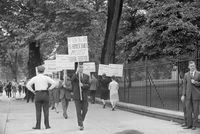
However, some of the first recorded instances of institutional workplace discrimination against workers specifically based on their LGBTQ identities (rather than for racial or gender identities) can be dated to the 1950s.
On June 5, 1981, The CDC publicly reported the first recorded instances of what would later become known as AIDS and kill hundreds of thousands of Americans. The crisis also created a painful stigma against LGBTQ workers.In the 2020 Supreme Court case Bostock v. Clayton County, the court ruled that workers cannot be fired for being homosexual or transgender. However, at-will employment still gives employers opportunities to fire employees for nearly any other reason they wish to give except for race, religion, sex or national origin and research suggests that LGBTQ workers often still face discrimination at work.According to a recent survey of LGBTQ professionals by LinkedIn, 25% of out respondents say they have been intentionally denied career advancement opportunities (such as promotions and raises) because of their identity. A significant 31% of out respondents say they have faced blatant discrimination and microaggressions in the workplace.One year later, demonstrators organized a march down Christopher Street to celebrate "Gay Pride" — a protest that has evolved into the pride marches that can today be seen in communities around the world. While the Stonewall Riots are often thought of as the beginning of LGBTQ history, LGBTQ people have existed throughout all of history and the fight for LGBTQ rights has happened in workplaces as well.
Building LGBTQIA+ worker power in our jobs, unions, and communities!
This past weekend, Pride at Work joined Friends of Trevor United, CWA 1180, the Central Labor Council, union siblings and allied organizations at SAVE 988 in front of Trump Tower in New York City in response to the Trump administration announcing that it would be dismantling the 988 "Option 3" crisis hotline.PRIDE 988 receives more than 400,000 contacts a year. These cuts remove 220+ jobs from CWA-1180 members and more from crisis workers at other organizations putting thousands of lives at risk.


So they could point blank say I don’t want a gay person working under me. I’m going to let you go. I’m not saying that my managers would do that, but you never know.” · Such fears appear to be echoed by others in the LGBT community, where according to a recent study by the Human Rights ...
So they could point blank say I don’t want a gay person working under me. I’m going to let you go. I’m not saying that my managers would do that, but you never know.” · Such fears appear to be echoed by others in the LGBT community, where according to a recent study by the Human Rights Campaign, an LGBT advocacy group, 53% of LGBT workers in the country hide their sexual identity at work and 35% feel compelled to lie about their personal lives while at the office.Another joint study by Deloitte, a consulting and financial services firm, and New York University, found that 83% of lesbian, gay and bisexual workers reported “covering” a part of their sexual identity at work. “It’s really downplaying the parts of ourselves that are either our identity or our experiences,” said Christie Smith, managing principal of the Deloitte University Leadership Center for Inclusion and one of the authors of the study. “The LGBT community is the population that is most impacted by this concept of covering, hiding their identity when they come to work.Of course, there are also LGBT individuals who are not out of the closet because they feel their sexuality is private and doesn’t need to be discussed at work."Jason" says he keeps 2 photo albums; work album excludes photos of him and boyfriend · In 29 states, private companies can legally fire or not hire someone because he/she is gay · Study: 53% of LGBT community conceal sexuality at work and 35% lie about personal lives
Over 8 million workers in the U.S. identify as LGBT.1 Employment discrimination and harassment based on sexual orientation and gender identity have been widely documented.2 Recent research has found that LGBTQ people continue to face mistreatment in the workplace,3 even after the U.S.
Supreme Court held in 2020 that discrimination based on sexual orientation and gender identity is prohibited by Title VII of the Civil Rights Act of 1964.4 Experiences of workplace discrimination and harassment negatively impact employees’ health and well-being, as well as their job commitment, satisfaction, and productivity. These primary effects can, in turn, result in higher costs and other negative outcomes for employers.5 · This report examines experiences of discrimination and harassment against LGBTQ employees using a survey of 1,902 LGBTQ adults in the workforce conducted in the summer of 2023.It compares the experiences of transgender and nonbinary (TNB) employees to those of cisgender LGBQ employees, LGBTQ employees of color to those of White LGBTQ employees, and LGBTQ employees who are out to at least someone in the workplace compared to those who are out to no one.Almost half (47%) of LGBTQ employees reported experiencing discrimination or harassment at work (including being fired, not hired, not promoted, or being verbally, physically, or sexually harassed) because of their sexual orientation or gender identity during their lifetime.Notably, across all six primary measures of lifetime experiences of discrimination and harassment, TNB employees reported higher rates than cisgender employees, people of color reported higher rates than White employees, and those who were out reported higher rates than those who were out to no one in the workplace. This discrimination and harassment are ongoing: 17% of LGBTQ employees reported that they experienced discrimination or harassment within the past year.


Finding a job with an employer that allows you to bring your authentic self to work, and is therefore supportive of the LGBTQIA+ community, can be important whether you identify as LGBTQIA+ or simply want to work for a company that prioritizes equality in their workplace culture.In this article, ...
Finding a job with an employer that allows you to bring your authentic self to work, and is therefore supportive of the LGBTQIA+ community, can be important whether you identify as LGBTQIA+ or simply want to work for a company that prioritizes equality in their workplace culture.In this article, we sat down with career coach Amira Sounny-Slitine from Happy Onion Coaching Collaborative to learn steps you can take to find LGBTQIA+-friendly companies.According to the Human Rights Campaign, 686 businesses earned a 100 percent rating on their annual Corporate Equality Index in 2020—a report that can be used as a tool to rate American companies’ adoption of LGBTQIA+-inclusive policies, practices and benefits. This number has grown since last year, but there is still improvement to be made. If you’re one of the 67% of active or passive job seekers that consider workforce diversity an important factor when evaluating a company, here are some things to look out for to determine if a company is welcoming and inclusive.A varied representation of gender and ethnicity can be an indication that a company cares about diversity in its workforce. Look for these images on the company homepage, “Careers” and the “About Us” sections of their website.It’s common to find public displays of support in June during Pride month but look for employers who celebrate their LGBTQIA+ employees year-round.Their websites include commitments to inclusion and diversity and provide transparent data regarding their efforts.Related: What is Work Culture? Look for companies that are active participants in community events like Pride, which is a month-long celebration of love, acceptance and self-pride founded in the LGBTQIA+ community.
As an LGBTQIA+ resident, you can get help connecting to work and building your job skills.
Ali Forney Center has programs to help homeless and at-risk homeless LGBTQIA+ youth ages 16-24 years old. You can get help finding work and HSE prep if needed.Join programs that help LGBTQIA+ residents develop their job skills.NYC Unity Project has resources and guidance for young LGBTQIA+ residents. NYC Unity Project’s goal is to ensure that LGBTQIA+ young people are free to not only survive, but grow and thrive.The LGBTQIA+ Center helps LGBTQIA+ young adults ages 18+ to confidently enter the job market, advance their careers, and become financially stable – all while building community with their peers.

Many people won’t feel safe or comfortable outing themselves at work, so design your programmes to include people, whether they are ‘out’ or not. An effective LGBTQ+ network should have clear aims, responsibilities, resources and support from leaders at the highest level.
There’s no button you can press for instant LGBTQ+ inclusion. It’s an ongoing, ever-evolving journey towards a more inclusive future. Similarly, there is no one template for a perfectly LGBTQ+ inclusive workplace.Too many companies slap the rainbow logo on their website during Pride month each year, without contributing in a meaningful way to furthering the cause of LGBTQ+ rights and equality. At best, this is tokenism, but at worst it could make marginalised people feel that they will be welcome when bringing them into harmful environments. “Contribute to grassroots organisations” says Thom Allcott. That way, you’re helping support the movement and getting support to people that work in challenging environments, and are often the least likely to get funds.Doing Pride right — here’s some ideas to show meaningful support to the LGBTQ+ community all year long. ... Checking in with your coworkers can have incredible results. This World Mental Health Day, try our eight tips to boost workplace wellbeing.Creating an LGBTQ+ inclusive workplace isn’t just the right thing to do, it makes business sense, too.






